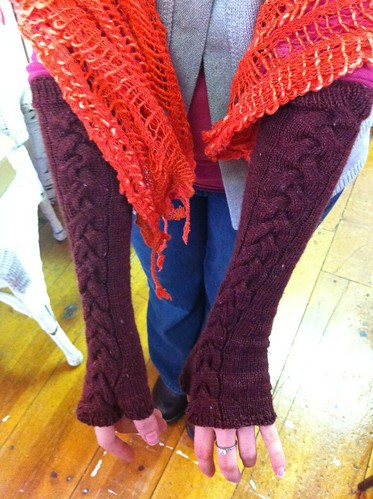
January is almost halfway over! And while that's certainly exciting from a pay-period point of view (here comes the 15th!), what's infinitely more interesting to me...
I got to spend some time today with Paige Arnof-Fenn, CEO and founder of Mavens & Moguls, a global strategic marketing consulting firm based here in the Boston area. She gave me an awful lot to chew on, but the part that I want to share with you now is what she had to say about how things are changing -- have already changed, in fact -- in the way business gets done today.
One of the things she talked about was how flat organizations like hers, which largely offer project-based work that draws on a diverse network of highly qualified, niche contract workers, can offer flexibility and responsiveness that the more traditional structures can't.
It's a lot like what I talked about back in January, about how the smartest traditional companies are exploring how opt-in, project-based work can help cut costs and offer valued employees flexibility and autonomy, while keeping them in your company's quiver, as it were. (This was based on an excellent post from the always thoughtful Rachel Happe of The Community Roundtable. Still very much worth a read.)
While (some) consultants have worked like this for a long time, the model is starting to emerge in the HR practices and policies of larger, forward-thinking companies. More and more, people are looking for a different model of work, one that includes (1) greater variety in both projects and team composition, (2) more flexibility to work more or less as circumstances change, and (3) more opportunity for virtual work and asynchronous collaboration. Of course, ideally we all want at least a little security, and to belong to some sort of loose cadre of colleagues with whom we can build trust and rapport over multiple projects and time.
This model offers significant advantages to the organization as well. More virtual work means less overhead. More contract workers means more efficient compensation structures. All this adds up to increased agility and responsiveness for the organization that can successfully pull it off.
I believe that this trend was already taking hold in some corners before the economic meltdown of last fall, but that crisis has forced people to truly rethink how business gets done. As Arnof-Fenn pointed out, if you're waiting for business to "return to normal" after what happened last fall, you're going to be left behind. The train just doesn't stop at that station any more.
So my question to you is, what new patterns are you seeing? And what are you doing to stay alert to the new pathways that are emerging in this incredibly fluid time in business and technology? Are you looking for the old patterns, or are you training your eyes to see the newer, less familiar ones?
What do you see?
(If you haven't seen the image above before, try looking at it close up. Then get up and walk about 8-10 feet away and look at it again. What do you see?)

January is almost halfway over! And while that's certainly exciting from a pay-period point of view (here comes the 15th!), what's infinitely more interesting to me...

Back in October, I went on a trip to Stowe, in Vermont. I bought some yarn from a very nice lady in a wee little yarn shop. She had spun and dyed the yarn herself, which...